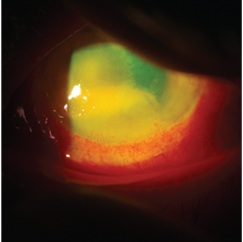 Daily disposable contacts have long been our lens of choice for pediatric and teenage patients, but we now offer them to patients of all ages, especially those interested in part-time wear for social or sports usage, those with a history of contact lens-related complications, dry eye or allergy.
Daily disposable contacts have long been our lens of choice for pediatric and teenage patients, but we now offer them to patients of all ages, especially those interested in part-time wear for social or sports usage, those with a history of contact lens-related complications, dry eye or allergy.
The perceived roadblock of higher cost as compared to two- or four-week replacement lenses seems to have been removed in the minds of many patients—and they appreciate and desire the comfort, convenience, increased hygiene and decreased risk of complications.
Plus, the lenses are now available in sphericals, torics and multifocals, so more patients have the ability to choose this modality if it suits them.
Is this a trend that’s happening throughout the eye care community? It appears so. Let’s look at the numbers.
Making the Daily Switch
Recent data indicates that daily disposables are the largest-growing segment in the contact lens market.1 In fact, more than 17% of fits and refits in 2012 were for daily disposables, and the modality represented almost 40% of worldwide sales through the end of the 2012 third quarter.1
 |
| Failure to adhere to lens care recommendations
exposes patients to severe consequences, such as this Pseudomonas ulcer. |
Consider this: Daily disposable contact lens wearers have the highest compliance rates (88%) when compared with their two-week (48%) and one-month (72%) counterparts.3 It is noncompliance with manufacturers’ and practitioners’ recommended replacement frequency that is associated with discomfort, discharge, redness, photophobia, pain, conjunctivitis and abrasions.4
As we all know, comfort is key to contact lens wear. With the summer months upon us, more of our patients will present with signs and symptoms of allergic conjunctivitis, which can make comfortable contact lens wear a challenge. Some of these patients will certainly discontinue lens wear—and possibly never resume, as discomfort is the most commonly cited cause of lens dropout.5 According to the 2012 Jobson Optical Research Contact Lens Wearers Insight Survey, 72.3% of previous contact lens wearers said they will “probably not” or “definitely not” return to wearing contact lenses.6 Refitting patients into daily disposables may allow them to continue—or resume—wearing their lenses, and wear them comfortably.
Clearly, both doctors and patients are showing a growing desire for daily disposables due to their many advantages: ocular health, convenience, comfort and increasing range of available refractive parameters and materials.
Consider being proactive in discussing the option of one-day lenses for your patients, putting aside any presumptions that an added cost outweighs the added value. In particular, daily lenses can be a better option for patients with a history of non-compliance, contact lens- or lens solution-related complications, dry eye and ocular allergy.
1. Nichols, JJ. Contact Lenses 2012. Contact Lens Spectrum, January 1, 2013. Available at: www.clspectrum.com/
articleviewer.aspx?articleID=107853. Accessed May 17, 2013.
2. Data on file. Johnson & Johnson Vision Care Inc. Survey of 1,300 soft contact lens and spectacle wearers. Dec. 2009-Jan. 2010.
3. Dumbleton K, Woods C, Jones L, et al. Patient and practitioner compliance with silicone hydrogel and daily disposable lens replacement in the United States. Eye & Contact Lens. 2009 Jul; 35(4): 164-71.
4. Dumbleton KA, Woods CA, Jones LW, Fonn D. The relationship between compliance with lens replacement and contact lens-related problems in silicone hydrogel wearers. Cont Lens Anterior Eye. 2011 Oct;34(5):216-22.
5. Rumpakis J. New data on contact lens dropouts: An international perspective. Rev Optom. 2010 Jan;147(1):37-42.
6. Jobson Optical Research. 2012 Contact Lens Wearers Insight Survey. New York: Jobson Medical Information; 2012.


